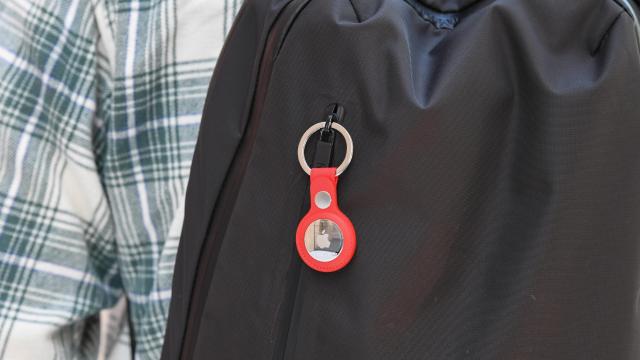Apple has historically reeled in a wide range of users with the promise of top-notch digital security and a safe, walled-off ecosystem. However, its new(ish) AirTags, which critics warn can be manipulated by creeps and criminals to track users, have drawn Apple directly into the privacy spotlight. Those growing concerns are likely part of the reason why Apple on Tuesday released a new Personal Safety User Guide aimed at providing users with resources to keep themselves, and their data, safe.
Though most of the suggestions and tips highlighted in the guide aren’t entirely new for Apple users, the company does notably include a section on AirTags. In it, Apple points to privacy features put in place to stymie stalking or other unwanted tracking and provides instructions on what to do if a user hears an AirTag blast out an alert that isn’t theirs.
Apple described the new resources as a guide for “anyone who is concerned about or experiencing technology-enabled abuse, stalking, or harassment.” Users experiencing harassment or abuse can search the guide for step-by-step instructions on how to remove another person’s access to their information in addition to highlighting features that can be used to enhance one’s digital security. Though the guide doesn’t introduce new security features, it could serve as a useful resource for individuals who are unsure where to begin.
In a separate, “Review and Take Action” section, Apple provides a bulleted list of 13 different options users can engage in to modify their security. The guide also offers three separate checklists providing detailed instructions to help users change their settings if they believe someone may have access to their accounts who shouldn’t. The section further provides tips on how to stop sharing sensitive information with certain people.
When AirTags first launched early last year, the number one concern echoed amongst privacy advocates was that stalkers could use the devices to surreptitiously follow and track people. To some degree, those concerns have manifested in the real world. There are already multiple alleged stalking cases involving AirTags reported across the country, with a new case allegedly occurring in Philadelphia just last week.
In an effort to alleviate some of those concerns, Apple rolled out an update last summer that would make AirTags beep at a random time if it’s not near the owner’s phone for somewhere between 8 and 24 hours. Apple also introduced a new Tracker Detect app that lets Android users scan for any unwanted Find My-connected devices belonging to another person in a nearby area. So far, those have had mixed results.
Outside of stalking, some car thieves have also reportedly started turning to AirTags to help track down, and eventually steal, high-end vehicles. Then there’s the whole moral debate surrounding parents clipping AirTags on their children.
Of course, not all AirTag use cases border on the dystopian. Many owners have noted using the trackers to locate their car in a parking lot, keep track of their pets, find their luggage at an airport’s baggage claim, and even to compete in high-tech scavenger hunts, if that’s your type of thing. This writer personally attached an AirTag to his keychain after deciding he was done obliterating his apartment in desperate, bordering on feral, attempts to find where his keys were hiding before work.
There are other, more clever uses as well. Just this week, a military family moving from Fort Carson, Colorado, to Fort Drum, New York, used an AirTag dropped into a box of her son’s toys to track their mover’s whereabouts. The family thought to track their items because military moves are notoriously fraught with delays. Using the AirTag, the family was able to confirm the driver’s exact location, in this case just one state away, despite claims from the driver that he was still halfway across the country.
If you are ever concerned they may be caught on the receiving end of an unwanted AirTag, there are several things you can do to protect yourself. First, AirTags that are separated from their owners should cause an alert to pop up on your device, which is a sign there’s a tracker nearby. As mentioned above, these separated AirTags will also eventually emit sound, but that may be difficult to hear in some situations. Android users meanwhile can use the Track Detect app to scan for unwanted AirTags nearby.
